This is not the year I was expecting from Rolex. At Watches & Wonders this year, Rolex took the rare step of introducing something truly novel, not just in the form of a new collection, but also in a new mechanical movement architecture with something called the Dynapulse escapement (which I offer a brief primer on here). The last time we saw something this unique and, well, new from Rolex was the introduction of the Sky-Dweller in 2012. It’s important to remember that, whatever your feelings may be toward the new Land-Dweller’s design or name, the caliber 7135 inside is just as, if not more significant.
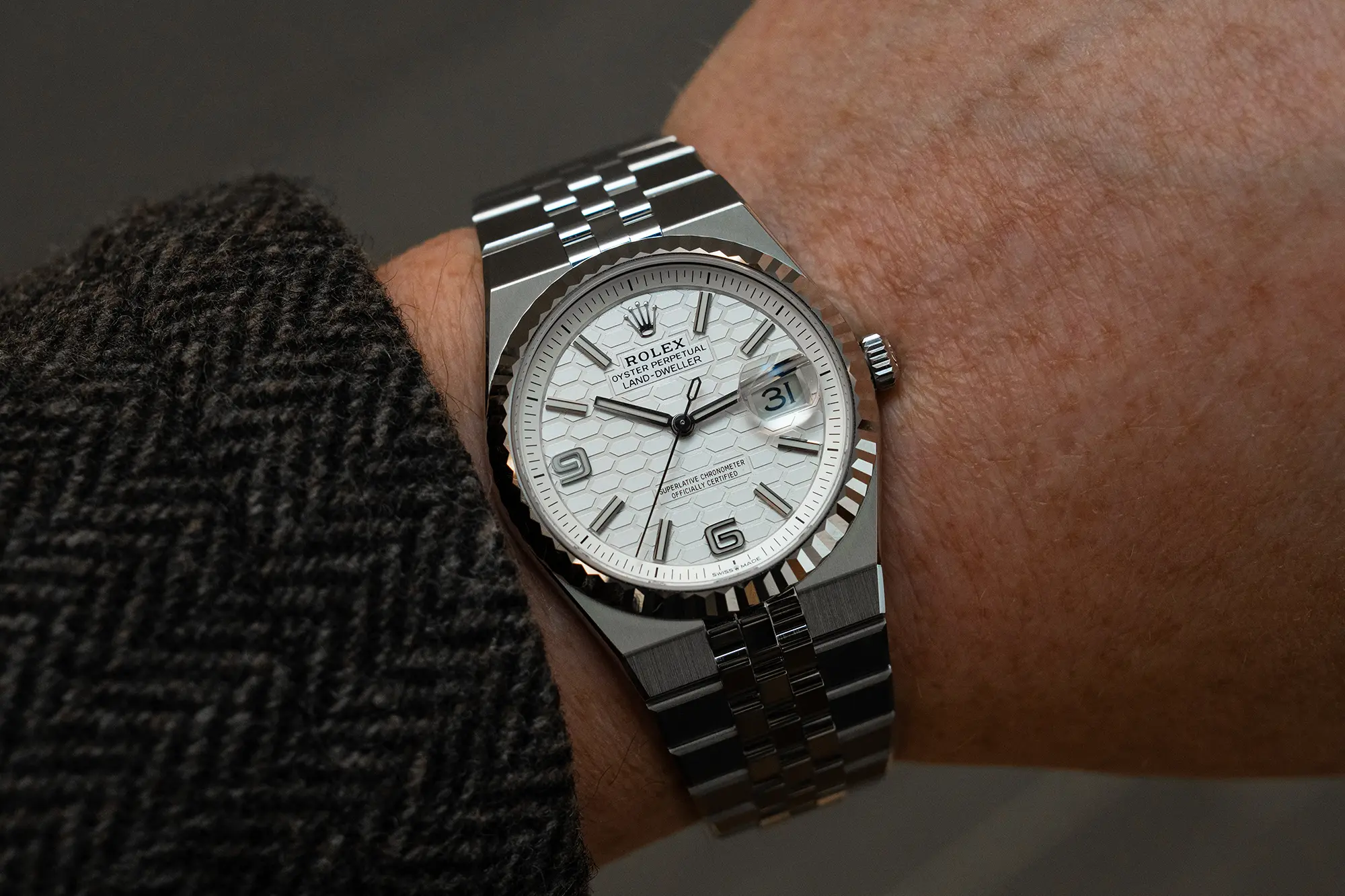
This caliber is the first of a new generation of movements from Rolex, and one that will likely set the foundation for other collections in the coming generations. Stepping back, the 7135 is in the same family as the 7140 that was introduced in the 1908 collection back in 2023, but there is one very important distinction, and that is the inclusion of the Dynapulse escapement. In my introduction, I likened it to a modern variation of the natural escapement invented by Abraham-Louis Breguet, but that’s not entirely true, as it doesn’t use a direct impulse to provide energy to the balance. While there are similarities, the Dynapulse is very much its own thing.
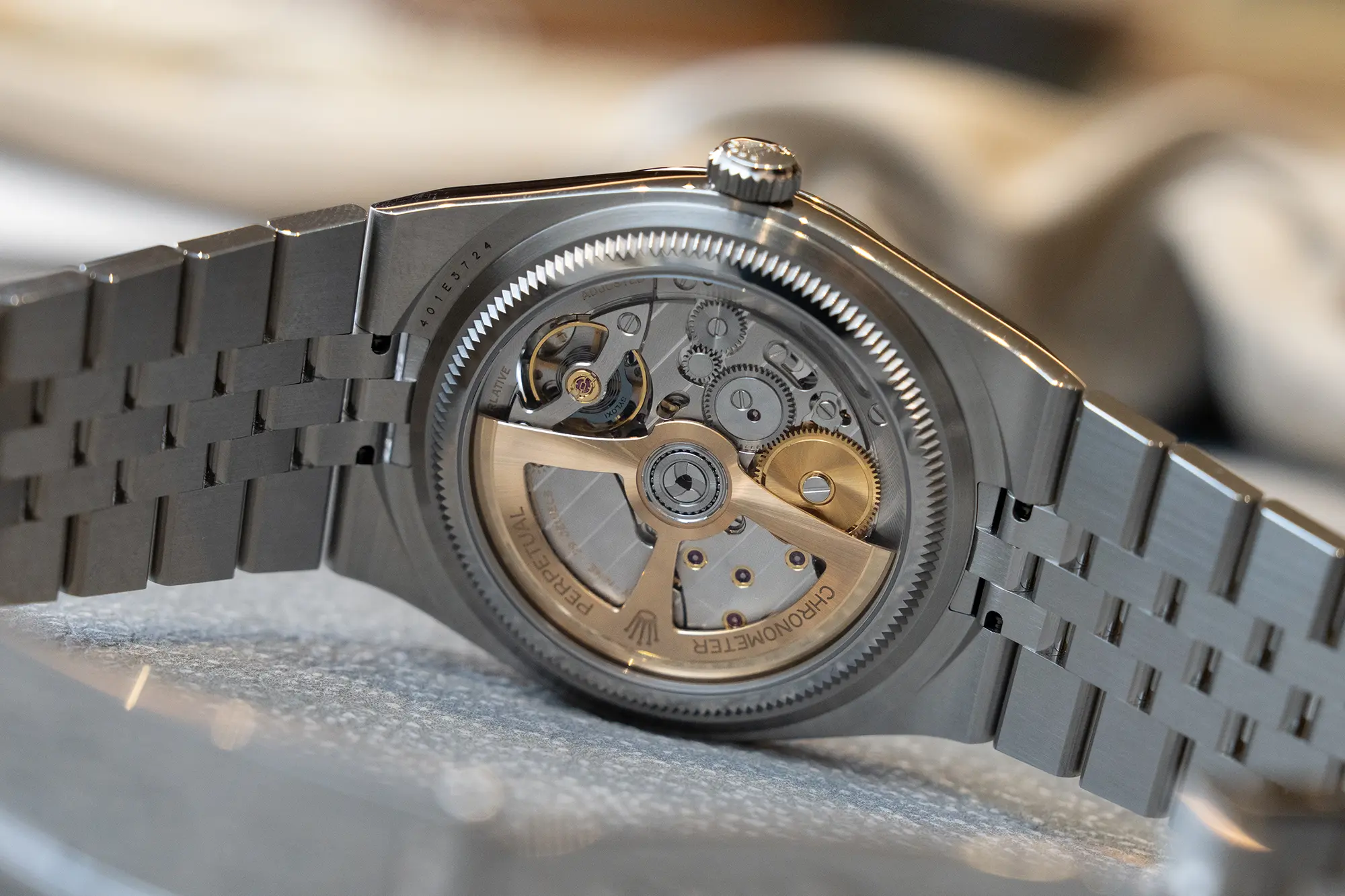
The idea, even going back to the 18th century, is to reduce sliding friction at the transfer point between the energy coming from the mainspring as it’s delivered to the regulating organ. The lever escapement has been the defacto method for centuries, and while it has many strengths, it doesn’t eliminate the need for lubrication as there is sliding friction between the stones in the palette fork, and the escape wheel. Yes, this is even the case in the co-axial escapement.

To be clear, the caliber 7135 also uses a lubricant applied to the escapement on the scale of nanoliters. Rolex applies an oil using a special curved needle that provides the level of precision required, and this process is done prior to being inserted into the movement. This is a new operating procedure for the manufacture, but the manner in which the oil must be applied makes it a necessity. It’s required because there is still a small amount of rolling friction between the teeth of the escape wheels as they push off of the transfer piece that connects to the balance.
I spoke to two independent watchmakers after the release, and both mentioned the ceramic balance staff as one of the most interesting elements of the system. Ceramic is of course quite brittle, and in this package sits at the center of a balance beating at 5 Hz. Here, the machined piece of white ceramic is shaped by femtosecond laser for optimal geometry at the staff pivots. It’s not a material you’d expect to find pulling duty in this area of any movement, and it’s clear that extra attention has been given to this bit of engineering to best meet the long term demands of the rest of the escapement.
You’ll notice that the Master Chronometer accuracy rating remains the same as the brand’s outgoing calibers, at +/- 2 seconds per day. The goals here are centered around consistency, efficiency, and longevity. The Dynapulse could, in theory, be dropped into the brand’s existing calibers, and if/when they will ever need repairing it will be the same story as far as servicing goes. Not only is the movement itself more efficient, it makes the operational element of serving more efficient in turn. The name of the game is optimization.
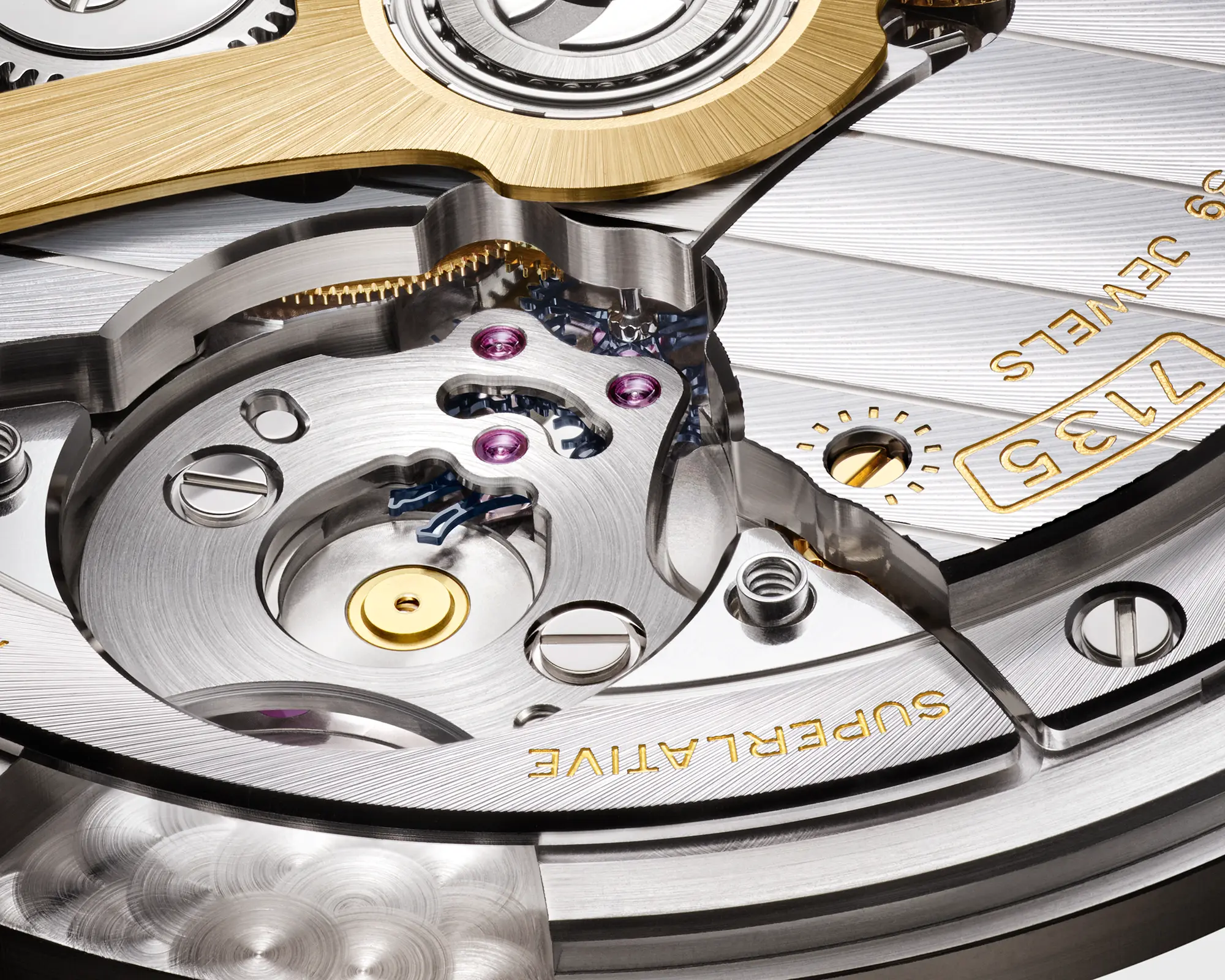
On the note of efficiency, the 66 hours of reserve within the caliber 7135 is quite impressive considering the size of the movement and its 5 Hz beat rate. Ultimately, the Dynapulse escapement is able to capture more of the energy from the mainspring as it transmits to the regulating organ. There is less of a parasitic energy load in this system, meaning more net energy from the mainspring.

The Land-Dweller is using Rolex’s Syloxi hairspring set within an optimized brass balance wheel, which is another first for this watch. This is held in place by a full balance bridge as you might expect, with a pair of optimized Paraflex shock absorbers cushioning that ceramic balance staff.
As a whole, the Dynapulse has a clinical quality that could be seen as a move further away from old-world artistry of regulating and hand-tuning. The silicon wheels are all openworked to maximize efficiency, and it’s all very high-tech in nature in a way that may feel disjointed from traditional watchmaking. As if it were a product of AI on some level. This brings us to something of a juxtaposition with the movement.
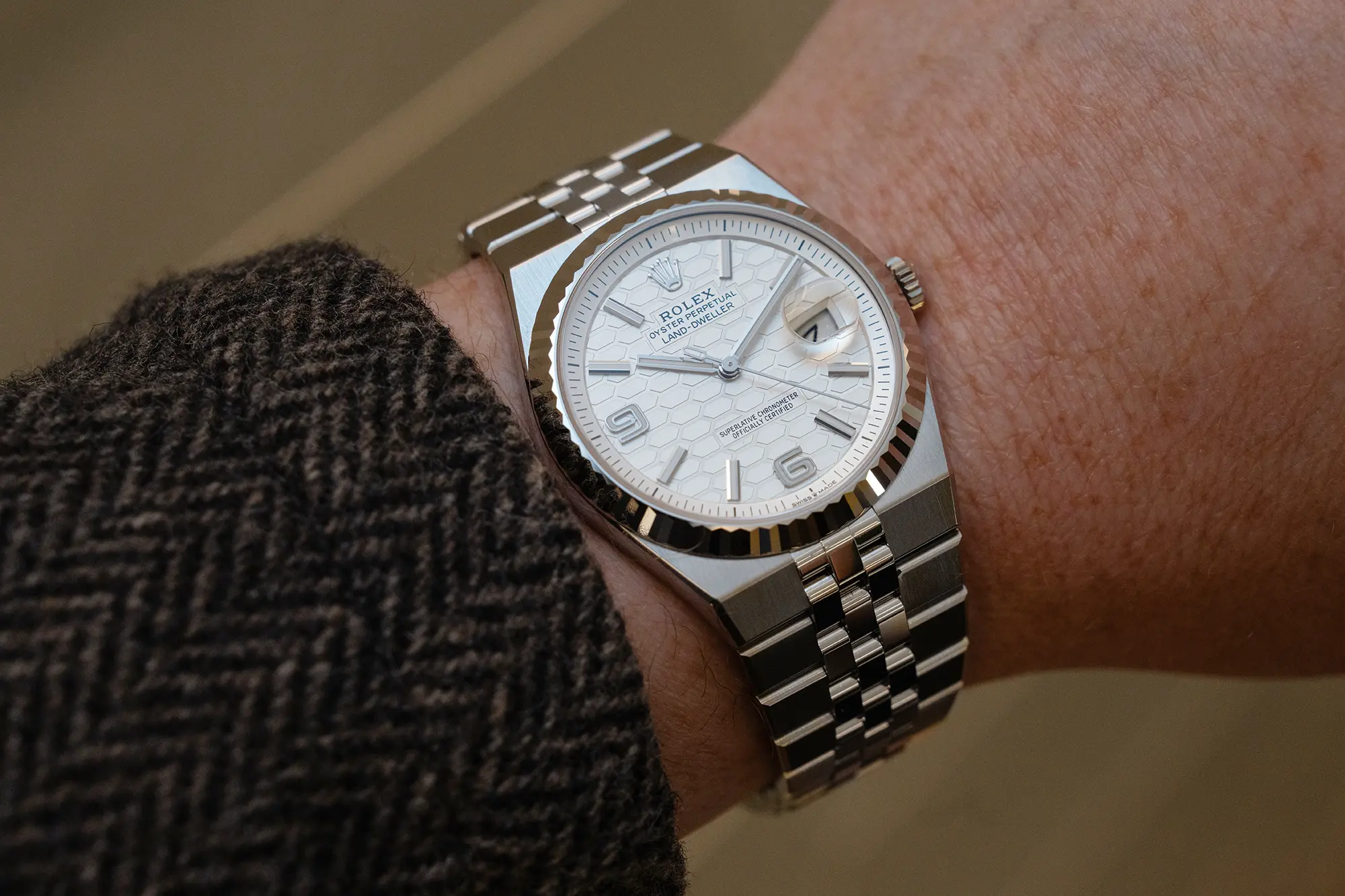
The caliber 7135 is undoubtedly an impressive achievement by Rolex, but one that seems to push the human element of watchmaking, regulating, and servicing, to the side. Large scale manufacturing in the industry has already done this to some degree, and this takes it a step further. The idea of this movement further reinforces my view of Rolex watches as high end tools and instruments above all, and not horological artistry as you might find in other brands. That’s not to say there isn’t beauty to be found in the engineering and solutions, but it’s not one that I need to see though an exhibition back.
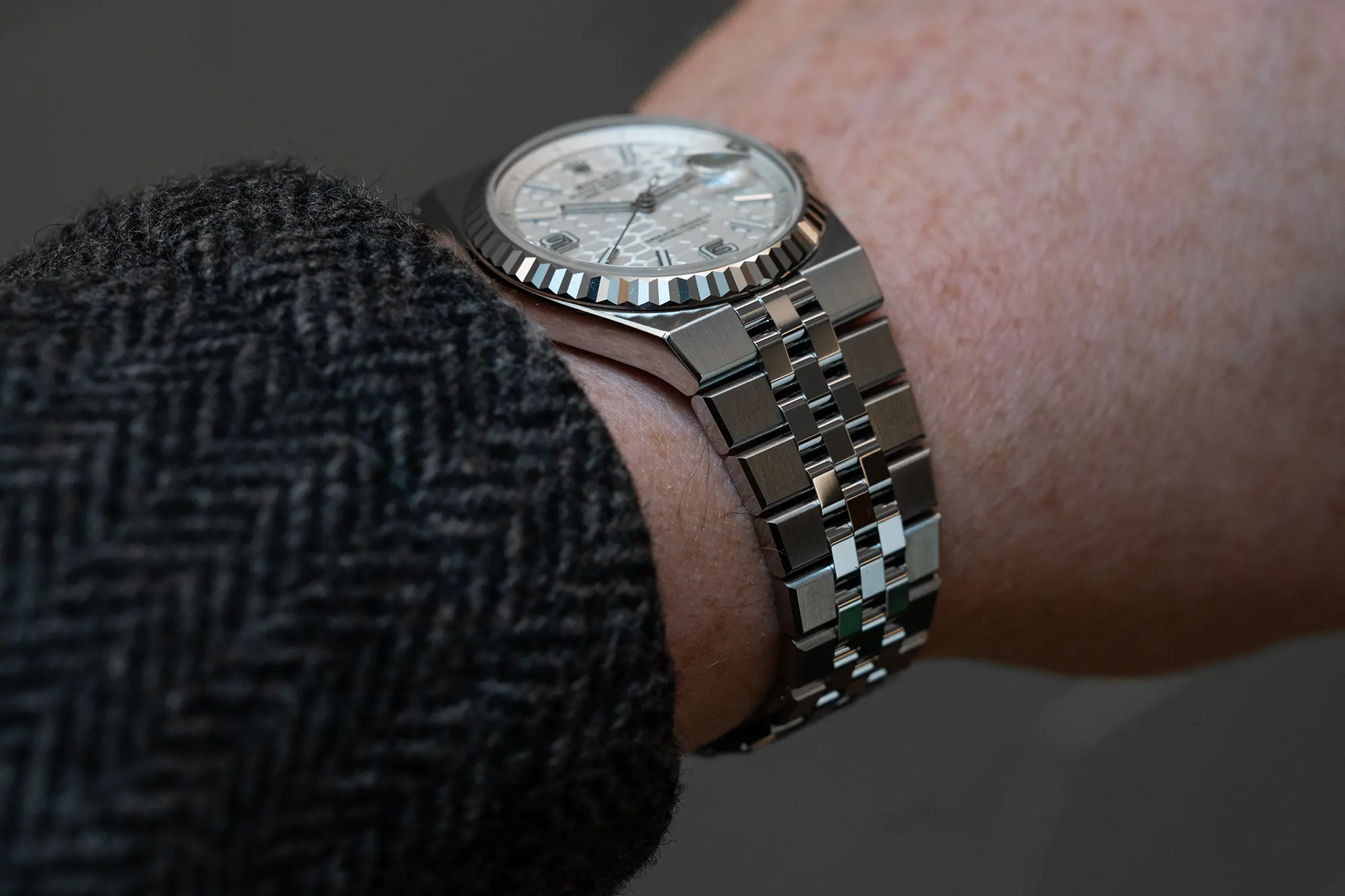
In fact, I’d love to see this caliber placed in something like an Explorer or a Submariner, watches with a clear and simple focus on function and performance. I’m not entirely sure what the Land-Dweller is, if I’m being honest. I find it interesting in a number of ways, but as a whole there’s no real clarity of purpose. It’s a great frame on the wrist, and the execution is top notch at every corner. The dial is a bit chaotic, especially when paired with the polished fluted bezel, but beyond that, I can’t exactly picture where I’d wear this watch or what I’d do with it. The Explorer and Submariner don’t suffer from such issues.
Perhaps that’s merely a function of time. The above watches have had many decades and successive generations with which to hammer out their distinct identities, and I’m willing to grant the Land-Dweller its own space to flesh out a unique identity outside of “luxury sport watch”. As for its movement, that’s another story, and one that will unfold over the coming generation of Rolex references. It represents a massive shift for Rolex, and one that I hope doesn’t lose sight of the role of the watchmaker in the overall life of the watch.
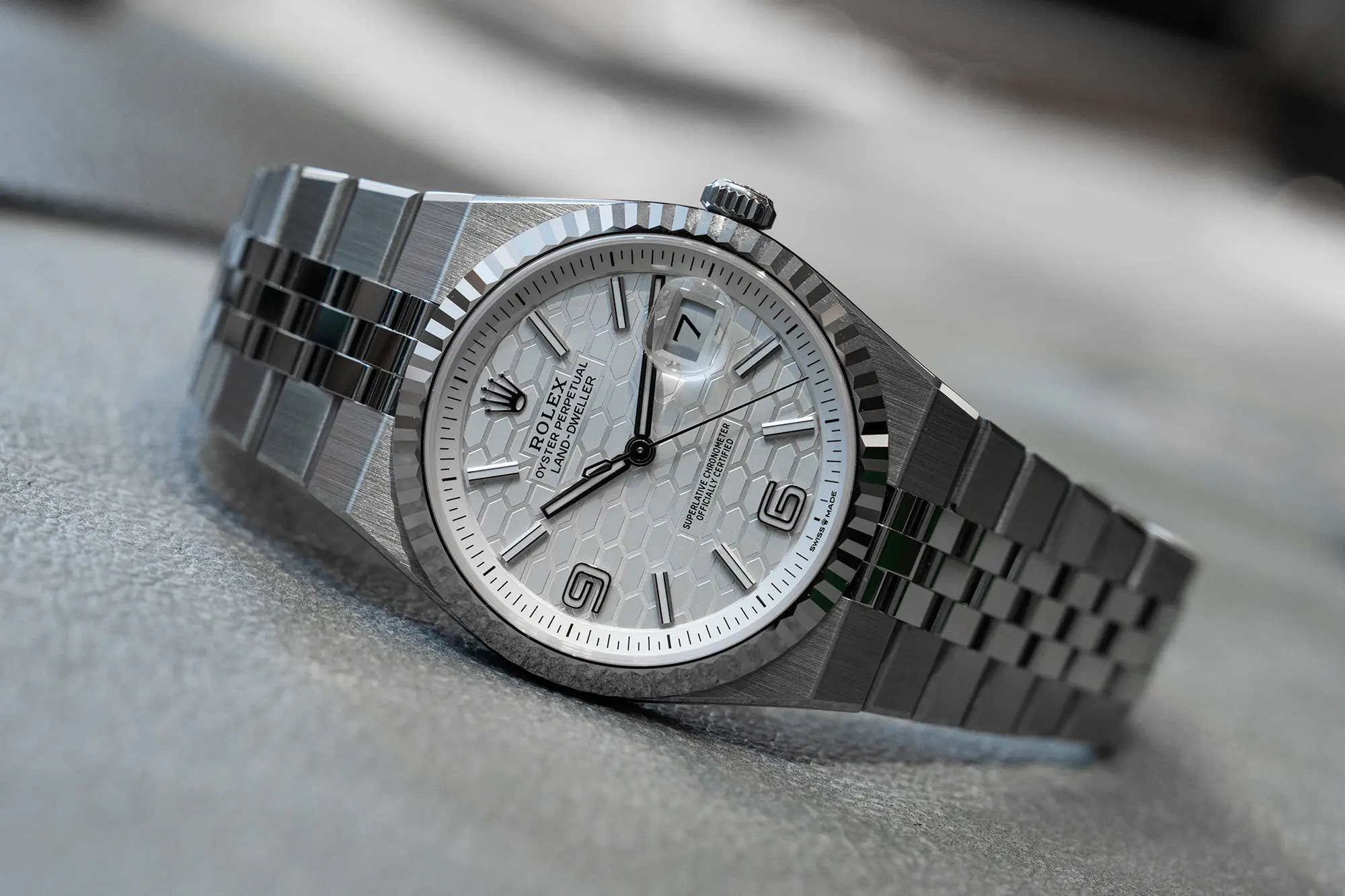
Whatever your thoughts on the movement or the design, this is a great platform on the wrist. The watch is being offered in both 36mm and 40mm sizes, which is something of a broader theme from the show as well (more on that in an upcoming episode of the podcast). Prices start at $14,900 and go well north from there when precious metals and gem settings enter the discussion. As for availability, well, you know the story by now. Rolex
